#make believe
Photo

Once upon a time. An anonymous fear submitted to Deep Dark Fears - thanks!
You can find original artwork in my store over here!
3K notes
·
View notes
Text

trying to work on Make Believe's current fic but have arts in the meantime ^^
#batim#make believe#bendy and the ink machine#the projectionist#norman polk#henry stein#ink demon#bendy#fanart#wip#batim fic
352 notes
·
View notes
Text

#ai#fake#counterfeit#bogus#fabricated#forged#phoney#imitation#false#mock#fictitious#spurious#concocted#invented#make believe#pretend#not real#pseudo#sham
203 notes
·
View notes
Note
Hey Mike, I’ve really enjoyed reading your long posts on projects you’ve worked on through your career. I was wondering if you could talk a little about your experience in film school and making your student films. I was able to watch Ghosts of Hamilton Street a while ago and found it really interesting how some of the same themes in that film have been consistent through all of your work and have really liked seeing the progression and progress you’ve made in your stories since. Thanks!
Oh wow, deep pull here.
I don't often talk about these movies, which I think of as the "Towson Trilogy."
They were amazing learning experiences, but aren't really fit for public consumption. I consider them an incredible, irreplaceable film school, but I've gone out of my way to not to help them become available - they just aren't on a level that I'd feel comfortable putting out into the world.
So let's go back to 1998.
I was an undergrad at Towson University in Maryland. I had dreamed of being a filmmaker for most of my childhood, and had made a few backyard movies on VHS with friends, and some VHS shorts in high school. But the idea of a career in filmmaking was very farfetched.
My father was in the U.S. Coast Guard and my mother was a medical office manager. They were always very supportive of my little "movie projects," but also very much invested in my education and wanted me to focus on careers that were more likely. A career making movies seemed very, very unrealistic, and I spent my senior year of High School focusing on coming up with a "real job" I could get passionate about.
As I graduated High School, I had let go of the filmmaking dream and was hoping to get enough scholarship money so I could afford to go to Loyola University Maryland, where I wanted to major in secondary education.
I was going to be a high school history teacher.
I didn't get enough scholarship money to attend Loyola, so I ended up enrolling at Towson University (then called Towson State) instead. I was initially very disappointed by this outcome, but it turned out to be one of the best things that happened in my life.
I was still planning on following the education track, but I felt discouraged and bruised by missing out on Loyola. So as I filled out my freshman electives, I signed up for Intro to Film on a lark. I mean, my hopes and dreamed hadn't panned out. I didn't get into my first choice school (or my second, for that matter) and here I was.
Why not?
It was immediately clear to me that this was what I wanted to do with my life. It was what I'd always wanted to do, if I was honest - I had been making all of those little movies, I lived and breathed movies, I had been saying since I was kid that I wanted to make movies for a living, and here was my chance to learn more about that world. I was hooked immediately. I started to ignore my other classes in favor in spending more time in the Mass Communications department (there wasn't an official "film" major at Towson); so what if this wasn't a "real job," so what if I didn't have a chance in hell of being a professional filmmaker... I had access to cameras. That meant I could make movies.
This happened to coincide with an exciting time in independent filmmaking. Spike Lee, Edward Burns, Kevin Smith, Jim Jarmusch - we would talk excitedly about the rumored budget of Robert Rodriguez's El Mariachi (everyone said it was just seven thousand bucks!), we would talk between classes about the filmmakers who were forging careers out of thin air on shoestring budgets. People were breaking the rules, and bucking the system. Careers were being made on one rogue film. They weren't climbing the ladder; they were suing for membership. Make a movie, then make a career. Independent Film was the way in. The odds might be against you, but if your number came up... man, you were on your way.
I had a substitute teacher in one of my film classes. His name was Steve Yeager and he'd just won the filmmaker's trophy at Sundance for his documentary about local hero John Waters, a movie called Divine Trash. He was the toast of Baltimore at the time, and he spoke breathlessly about the independent filmmakers who were leading the charge and finding audiences outside of the studio system. He told the students that any of us could do this - any of us could make a movie, especially using this brand new technology called:
DIGITAL VIDEO.
Steve argued that DV had democratized filmmaking, and cited filmmakers like Mike White, whose DV feature Chuck and Buck had just hit the festival scene. Dogme 95, the creative movement founded by the Danish directors Lars von Trier and Thomas Vinterberg, was the talk of all the cinephiles. Not only could we make a movie, Steve declared, we could make it for a fraction of the cost that most filmmakers had had to bear over the years when dealing with purchasing and processing film.
I had been inspired by movies like Clerks, The Brothers McMullen, and Stranger Than Paradise - I was working on my own script, a slice of life story called Makebelieve, which was focused on the only slice of life I knew anything about: a college kid,,, who loved movies... and... had a crush on a girl.
You write what you know, I guess.
Now, our little Mass Comm program at Towson was a great way to get experience making movies, but we made them as part of a group. The best case scenario was waiting until you were an upperclassman and hoping you'd be able to direct a short film with your classmates, but most students never got their turn directing. Some students would labor through the department for four years but never sit in a director's chair when the senior projects came around. I was too impatient to wait for that. I wanted to be like Kevin Smith, Mike White and Ed Burns - I wanted to make my movie, my way, right now.
I was actively averse to commercial viability (an allergy it took me far too long to overcome), utterly enamored with the emerging mumblecore "indie film" vibe of the time, and convinced that a movie comprised of extended conversations about collegiate dating would make for riveting entertainment. I had several friends in the Theater Department, enlisted the help of my roommate Dave Foster, and pretty soon we were doing table reads and shooting proof-of-concept trailers on miniDV.
Raising money for the movie was a huge challenge. A girlfriend had managed to get ahold of Bruce Campbell's email (it was the worst-kept secret on the fledgling internet at the time), and I emailed him to invite him to be part of our little movie. He actually wrote back - he declined participation (for reasons that are astonishingly obvious to me now) but was kind enough to send some advice for the production. We were so grateful he took the time to respond that we named our production company after our favorite line from Army of Darkness... we were Sugarbaby Productions.
Steve Yeager, my substitute teacher, had told the class "if any of you write a feature film, I will do what I can to help you produce it." I came up to him after class and handed him the script for Makebelieve. He looked a little shocked, but he agreed to read the script. He did, and he liked it, and for reasons I may never understand, he said "okay, fine. I'll produce your movie."
Steve was true to his word. He didn't bring money (it would have been certifiably insane if he had), but he used his connections to find a crew of professionals in Baltimore willing to work on a little college movie. We had fundraisers, we had bake sales, we sold T-shirts on campus to raise cash to shoot. We hit up every family member and friend for possible investment (my parents, to their endless credit, put up more money than they could afford), and we scraped together enough to shoot the thing.
We filmed Makebelieve on miniDV in over the summer of 1999. The University gave us access to its facilities to use for locations, we had the run of campus, and our tiny cast and crew received independent study credit for their participation in the film.
The technology wasn't quite the amazing godsend people had made it out to be. It was low resolution, there was not yet anything that allowed you to change frame rate; everything still had that "soap opera" feeling you get with 30 fps.
We compensated for this by emulating a Hal Hartley film I'd seen at festival called Book of Life, which had opted for a slower shutter speed to give the film a dreamy, smeary look that hid the frame rate. We shot at a 1/15s shutter speed, and the movie looked a bit like an acid trip... but at least it didn't move like a soap opera.
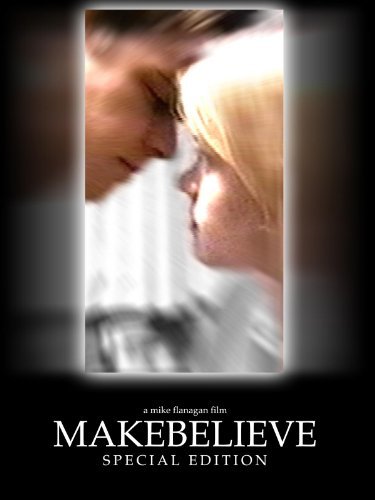
The finished movie... well, it's not very good.
It was my first feature, it wasn't really about much of anything, but it had some fun dialog and a truly committed young cast. It had promise. And we finished the thing! That was the biggest miracle. It was the best film school I could ever hope for - a trial by fire that pulled me through each and every phase of production and forced me to learn on the job.
The film was rejected by every single major film festival - my dreams of being the next Sundance breakout auteur were dashed very quickly. But we had our world premiere at the Maryland Film Festival in 2000, to a sold out crowd, and that was the single biggest night of my young life up until that point.
I was completely hooked. I knew the film was deeply flawed, and I was eager for another at-bat - I knew I could do better.
I wouldn't wait long. I had already written a script for an "edgy" follow-up to Makebelieve called Still Life. It was "edgy" because it featured a more nihilistic plot, about a group of photography majors who begin exploiting elements of their lives for their senior thesis project, and in doing so get disconnected from their lives by examining them through lenses (Get it?! Man, I sure was a film student, wasn't I)
I had gone through a bad breakup after Makebelieve was done, an engagement that had ended and broken my young heart. Frankly, we were just babies - I really had no business whatsoever trying to get married at 21 - but I wrote that breakup into the script and let the bitterness rip. Edgy, right?
I used most of the same cast from Makebelieve (thus beginning a habit that still holds true today) and set about trying to find money to make the film.
The issue was how to raise money. We had already knocked on every door to finance Makebelieve and nobody got their money back; the movie never sold. Investing in independent films is one of the highest risk investments you can make. We'd turned over every single rock we could think of last time, how the hell were we going to do that again?
We courted more investors, including some professional risk takers and VC people. An accountant named Harry Rosen drummed up a bunch of investors in exchange for a role in the film (he played the grandfather of one of the leads). This movie had more money than the last, and it wasn't from friends and family by and large - it was from people who were giving and expecting much more.
We shot Still Life in the summer of 2000, just after Makebelieve had premiered (even then, I couldn't wait for one movie to come out before starting another). It was a more ambitious shoot across the board. And again, it was a phenomenal learning experience. And again, the movie wasn't quite... good.

The first cut was 180 minutes long. Yep, 180. The Final Cut is... 75 mins long. So... yeah, it was probably a few drafts undercooked.
It was indulgent, it was uneven, and it was spectacularly self-important. But it got into some more festivals - quite a few more than Makebelieve -and it even won some awards.
See, the rise of digital video meant an avalanche of digital movies. It had democratized filmmaking after all - suddenly, the sheer volume of submissions at film festivals increased by a factor of ten. And with that many thousands of extra movies flooding the festival market, the laws of supply and demand kicked in - there were suddenly a LOT more film festivals.
And there were film festivals who weren't terribly scrupulous. There were festivals who only existed to collect submissions fees, and they'd accept movies that otherwise would never have made it into a fest, so long as they thought they could make some money of the filmmakers. Some of the fests we played back then soon became notorious for running these kinds of scams. But it wasn't nearly as difficult to get into festivals as it once was... and it wasn't nearly as difficult to win awards.
One of the festivals we were accepted into was in Los Angeles, and I came out to LA for the first time in my life for the screening. While here, I started making plans to move to California. It seemed impossible, daring, and crazy at the time - I had no money, my movie had some laurels on the poster but wasn't commercially viable - and I had no idea how to pull it off. But I decided then, walking around Santa Monica late one night after a screening: as soon as I graduated from Towson, I'd move to LA.
But it turned out graduation was a long ways off.
Still Life took up an enormous amount of time, and I fell behind on my studies. The film never did find a distributor. It played a few dozen fests (some of which were downright predatory) and then it was over.
Itching to keep shooting stuff but certainly out of fundraising options, I ended up part of a startup production company consisting of a recent grad and another student at Towson, and we actually got a couple industrial jobs around Baltimore. I took a semester off to focus on the work. Graduation got pushed back. And then I took another semester off when more gigs came in.
I finally graduated in May 2002, two years later than I'd planned. My production company had gone bust (we had no idea what we were doing) but we did some good commercial and industrial work and I got some experience trying to manage a business.
I had also wised up in one very important respect: I had kept writing scripts this whole time (you really can't help it, if you're a writer) and I had finally decided to embrace GENRE.
I had written a script called Ghosts of Hamilton Street. On the outside, it looked like an episode of The Twilight Zone; the plot centered around a washed-up alcoholic who starts to notice people in his life disappearing without a trace... but whenever one of them goes, the world around him completely rewrites itself as though they never existed at all.
I thought I was starting to play with genre conventions, doing a light sci-fi story that would be fun and character-forward. What I was really doing, though, was dealing with the fact that a lot of my closest friends from college had graduated on time, two years before me, and gone out into their adulthoods. I missed them, and I felt that my world was altered with each of their absences. I was starting to get introspective.
This was about something. It was about regret, it was transition, it was about losing one's comfortable world and heading into the unknown. It was about my regret for my failed engagement (and my exploitation of it for Still Life), and about the friends who had gone ahead into adulthood without me.
It was also, I realize now, about having a drinking problem. I wouldn't really understand this, or take any action to fix it, for fifteen more years.
For now, I just knew this one felt a little different. It had an engine. I had something to talk about for the first time in my filmmaking career. This one wasn't a class project, just fumbling around with the technical realities of production; this had a tiny, infant, unformed little voice in there. It was small, it was buried, but it was there.
So how could we finance it?
Okay. You're not going to believe this, but it's true... I've never really talked about this publicly before, but it's the truth so here goes:
A good friend of mine, a fellow student at Towson, was hit one night by a Papa Johns delivery car while crossing the street. He settled with the company and came into a lot of money. He invested some of that to finance Ghosts, and... well... that's how we did it.
Yep, you read that right: my third feature was financed because a friend of mine got hit by a pizza delivery guy. So when people ask me what advice I have for fundraising, unless I say "start shoving your friends in front of delivery vehicles", I'm being a bit of a hypocrite.
My friend was now a bonafide executive producer, and he was walking normally again, so we were off to make a movie!
It was a modest budget compared to the sprawling mess that was Still Life, but the digital video technology had advanced - we were now shooting in 24p, and for the first time in my career, my little digital features actually moved like a movie.
Again, the cast brought back some familiar faces from Makebelieve and Still Life. We held auditions for the other parts.
One of the fellow Towson students who auditioned for a role was a girl I knew tangentially from the theater department. She was much closer to my roommate Paul Jerue, who was working on the movie too, but she'd been over my place a few times and we'd hung out here and there.
Her name was Amy Schumer, and I remember her audition very well. I didn't give her a part in this movie. I remember telling the producers I thought she was too funny for it. She was quite funny, in fact. I think she's also now the most famous person to come out of Towson University.

Somewhat ironically, there aren't a lot of photographs from this period of my life, because I didn't have a digital camera. Everything was on film, and just about all of those shots are lost to time.
But there are a few leftover from Ghosts that I'll share here - I've used my phone to snap some pics of pages from a single surviving scrapbook:


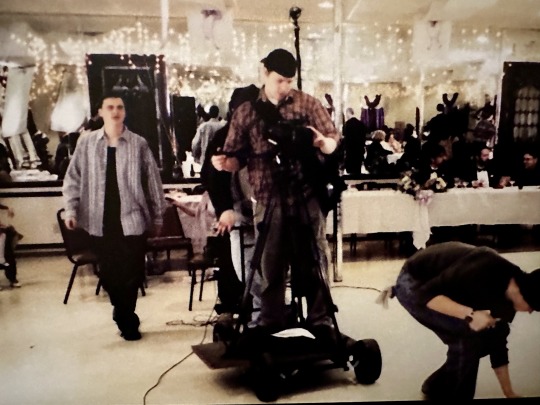
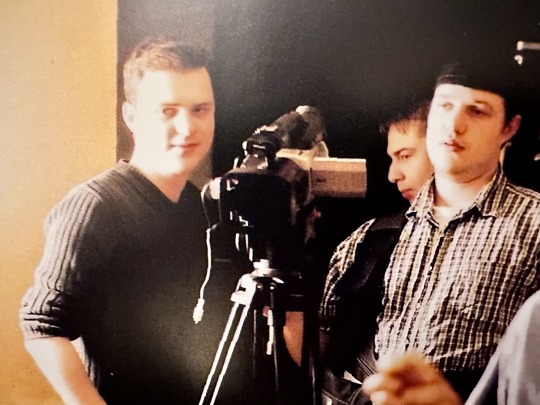
(Holy god, I actually had hair...)
Ghosts of Hamilton Street isn't a bad movie. It had taken me years of work, but I had finally made something that wasn't bad. They say your first ten movies are gonna suck, so get them out of the way early... maybe I was a little ahead of schedule after all.
Even though I had graduated just before we shot it, I still consider it a student film. It was shot in and around campus, utilizing equipment from the school, and the cast and crew were comprised of students and graduates (a lot of the cast were returning actors from Makebelieve and Still Life).
The star of the movie was a student who was ahead of me by a year named Scott Graham. I loved working with him, and I loved what he did with this movie.
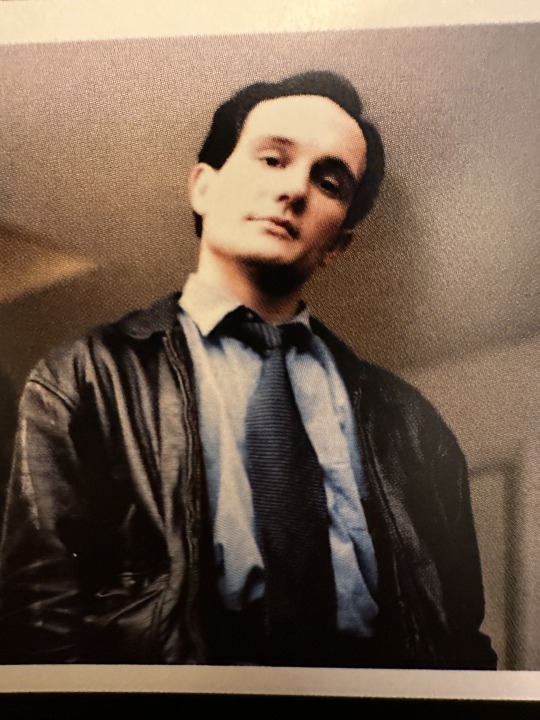
(The great Scott Graham, three years before the Oculus short)
Three years later, he would fly himself out to LA from Washington DC in order to star in a short film I'd make in Los Angeles called Oculus.

(Filming Oculus - Chapter 3: the Man with the Plan in 2005)
Looking back, I think of Ghosts of Hamilton Street as my first movie. The other two were just class projects, really, and I was throwing spaghetti against the wall. But this one... it features an ambitious 90 second oner in the middle of the movie that competently tracks Scott through a bewildering office environment. It's a good shot.
It uses its genre moments as extensions of character, and is not concerned with scares or set pieces. It's metaphorical, whereas the other two movies were literal.
And it ends on a monologue.
As far as film festivals, it actually did okay. We screened at a few dozen places, and even traveled with the film. It won some more awards at some reputable festivals. And that winter, just after its premiere, when I packed the moving van to go to LA, I brought 100 DVD copies with me, hoping it would kickstart my career in Hollywood.
It wouldn't; that would happen ten years later, with Oculus. And when I filmed the Oculus feature, Scott Graham - star of Ghosts of Hamilton Street, and star of the Oculus short - played the janitor at the auction house where the mirror was kept.
And the two police officers who arrest Brenton Thwaites at the end of the film? Zak Jeffries, star of Makebelieve, Still Life, and Ghosts, and Dave Foster, my freshman year roommate, who worked crew on every film I made - even the little 8mm shorts - in Towson.
Nat Roers, who starred in Makebelieve and Still Life and was also my roommate for the last two years of college, appears as a jogger in Absentia, Dash Mihok's doomed wife in Before I Wake and as a reporter in Gerald's Game.
My professor at Towson who encouraged me to make all of these movies, and helped every way he could, was a man named Tom Brandau. He acted in Ghost of Hamilton Street, but he also was running the Fargo Film Festival in 2011, and he invited us to host the world premiere of Absentia at the festival. He also sat with me at the monitor for a week while we filmed The Haunting of Hill House, and for several days at the Overlook while we shot Doctor Sleep. He passed away a few years ago, and I miss him terribly.
As for Steve Yeager, the substitute teacher who dared us to make a movie my freshman year, and then put his money where his mouth was and produced my first digital feature a year later - Steve was also on set for Gerald's Game and for Doctor Sleep, and we went out for a beer to celebrate after a long shoot day. I quit drinking before that movie wrapped, so I believe it may have been one of the last beers I ever had, and I'm so glad I got to share it with Steve, who took this pie-eyed kid from his class and told him he could be a filmmaker.
My roommates when I moved out to LA were Ghosts star Zak Jeffries, Ghosts producer Jeff Seidman, crew members Amy Winter (soon to be Amy Seidman), Joe Wicker and Gaby Chavez.
In a way, all of these people were the foundation that started it all. I actively hate Netflix's lame "Flanaverse" idea, but if there was a Flanaverse, these were the people who built it. Scott Graham, Zak Jeffries, Dave Foster, Nat Roers, Jamie Sinsz, Megan Anderson, Steve Yeager, Jeff Seidman, Amy Seidman, Will Pinkine, Rich Koeckert, Jessi Bounelis, Chris Cridler, Sarah Yarbrough, Kara Webb, Kerry Brady, Joe Wicker, Gaby Chavez and Tom Brandau.
They were ride or die, man.
I think back on that time now and laugh. What a deal we made about digital video... I remember scraping together $2,000 to buy a 9 GB hard drive to edit - yes, I said NINE GIGABYTES.
I think about all of those dreamers out there today who have a 4k camera with 256 GB (or more) IN THEIR POCKET.
Yep, you've got a camera in your pocket that is infinitely more powerful than the cameras I filmed the first four features of my career on. Anyone who says they want to be a filmmaker and aren't sure how to start... I mean, take that thing out of your pocket and SHOOT SOMETHING. You are so, so, so ahead of the game.
So thank you for asking the question, and sorry for the long post. What I will always remember about that time was just how wildly, recklessly, adorably foolish we were... and how if we hadn't been, I might not have a career at all.
I made three independent feature films in my twenties, and another in my thirties, and while I don't think most of them are ultimately worthy of an audience, they were the best education I ever could have hoped for. I made them with dear friends, some of whom have remained in my life and heart to this day, and all of whom I owe an enormous debt.
My favorite thing? The title of the first one.
Makebelieve.
Because man, we were kids. Everything about that word is whimsy, innocence, and naivety. It's not a perfect movie; in fact, it isn't even a good one.
But that is a perfect, perfect title.
195 notes
·
View notes
Text
Kids Play TTRPGs
There are plenty of people who started playing D&D or other TTRPGs as kids. Heck, imaginative play (which all kids engage in on some level and in some manner) is central to what TTRPGs do. Roleplaying is a critical part of developing your child self as a person!
So what's the benefit of giving kids a rule-bound system like D&D, Quest, or Kids on Bikes? Why should kids play TTRPGs and not just make-believe?
TTRPGs teach boundaries.
Some of this depends on how a particular group runs, but a healthy TTRPG group teaches kids where boundaries are and how to respect them.
This can show up in lots of ways.
letting dice determine success
working within the limitations of a class, feature, or spell description
avoiding upsetting or scary topics, as requested by a player
offering trigger warnings and safety tools
accepting when a GM says no
respecting when another player says no
Some of those things are organic to telling a story together. Some of them are brought in to keep the game fun for everyone, like safety tools. All of these examples—and more!—help kids practice boundaries one step removed from real life, where things are a bit harder.
TTRPGS provide escape.
As adults, we think of TTRPGs as escape from the crushing reality we live in. We can free ourselves from the news cycle or our social media feeds for a few hours and pretend we live in a world where our actions are world-changing (and I'm talking saving-the-world-from-evil-powers world-changing).
Kids need escape too! Not so that they're living outside of the world, but so they can practice the skills they need to live within it.
It's way easier to advocate for your PC who's scared of creepy crawlies than it is to admit your skin crawls around your buddy's pet snake.
Kids can practice all sorts of social skills in the freedom of TTRPGs because those games provide escape and distance from the world they actually inhabit.
For example:
admitting fears
facing conflict
handling disagreement
learning about themselves
experimenting with consequences (from stealing a loaf of bread to going full murderhobo at times)
setting goals and making plans
Games are low stakes ways for all of us to practice tough conversations or new social skills. Why not let kids get a leg up by teaching them to role play?
TTRPGs build confidence.
Practice makes perfect, and TTRPGs are a great place to practice your sense of self (while inhabiting a character).
As kids get more confident roleplaying their PC, they learn gain confidence in who they are and speaking from that place.
This doesn't look like adults might expect though. We think of the bard suddenly offering a grand speech, or the shy loner forging bonds with the rest of the party.
Kids gaining confidence might not look like what you expect (more on that another time), but TTRPGs help clear the path for confident, empowered kids. And that's something worth making space for!
#ttrpgs#ttrpgkids#kids play ttrpgs#gamer kids#growing up with ttrpgs#growing up with dnd#confidence#social skills#boundaries#dnd#D&D#roleplaying#roleplaying games#tabletop#ttrpg community#make believe#make believe is for kids too
201 notes
·
View notes
Text
The Secret of Moonacre 2009




#moon acre#fairy#whimsy#magic#make believe#princess#moon#moon magik#magik#fairies#princesses#the secret of moonacre#moonacre#moonacreweek2022#readathon
469 notes
·
View notes
Text
make belive animatic-garten of banban oc-snuggles the bunny
i hope ya;ll like this little animatic, this took so long but was so worth it!!!
#garten of banban#garten of banban fanart#garten of banban oc#banban#oc#oc animation#oc animatic#fan art#oc art#art#digital art#animation#fan animation#fan animatic#flipaclip#jakeneutron#make believe#jakeneutron make believe#no one cares kira#shut the f*ck up kira#kira rambles#kira talks
27 notes
·
View notes
Text
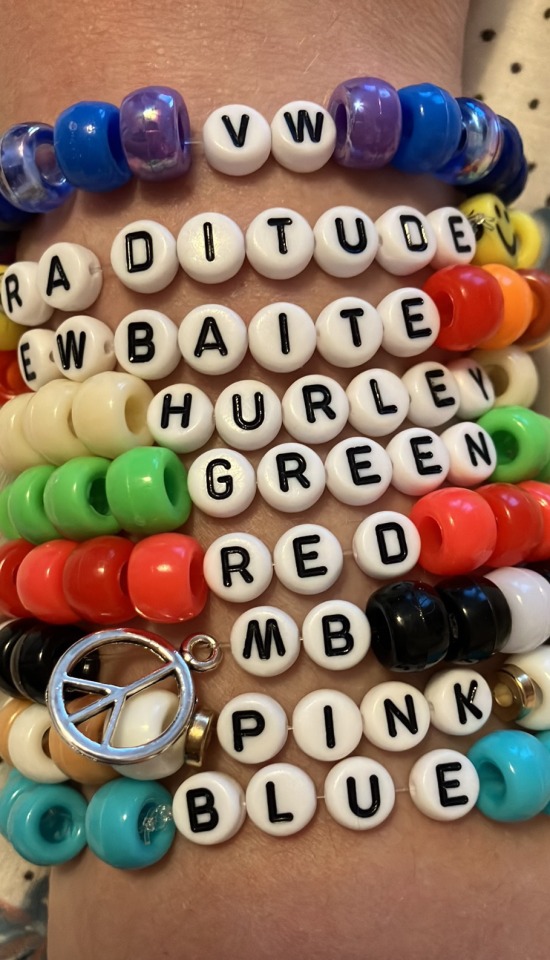
what albums should i make next?
#weezer#weezer discography#bracelet#bracelets#everything will be alright in the end#raditude#blue album#pinkerton#van weezer#hurley#green album#red album#make believe
13 notes
·
View notes
Text
Daydream
-
I imagine you're soft-
Strong in your guidance,
And soft in your flesh.
You'd whimper as I sunk my teeth into you,
And grab my hips at the feeling of me.
I imagine you'd be lovely,
The way a drug is.
Absolutely demolishing my senses
With both ecstacy and fear-
And then leaving me breathless,
My hands searching for
My next fix-
I imagine your lips would fit to mine,
Like the sculptures admired throughout the ages.
Formed delicately with intention
By hands who knew what one set of lips
Would need mirrored in another.
We'd kiss like that
For generations to watch in awe-
I might be in love with you.
And while that is terrifying,
I like to imagine
You could possibly be madly in love with me, too.
x
#writing#poets on tumblr#spilled ink#poem#spilled thoughts#original poem#mental health#lovesick#in love#poems about feelings#poems about love#romantic couple#hopeless romantic#romantic poem#romantic#romance poem#poems#poetry#prose poetry#prose#spilled in poetry#spilled feelings#spilled words#spilled poetry#original writing#make believe#my art#tumblr writers#poets of tumblr#devil
14 notes
·
View notes
Photo

>a drawing from Henry’s sketchbook
bc Make Believe’s Second Verse ended dark and I wanted to draw something cute
#batim#norman polk#the projectionist#sketch#fanart#bendy and the ink machine#bendy and the dark revival#make believe
452 notes
·
View notes
Text
Nijntje having a picknick!
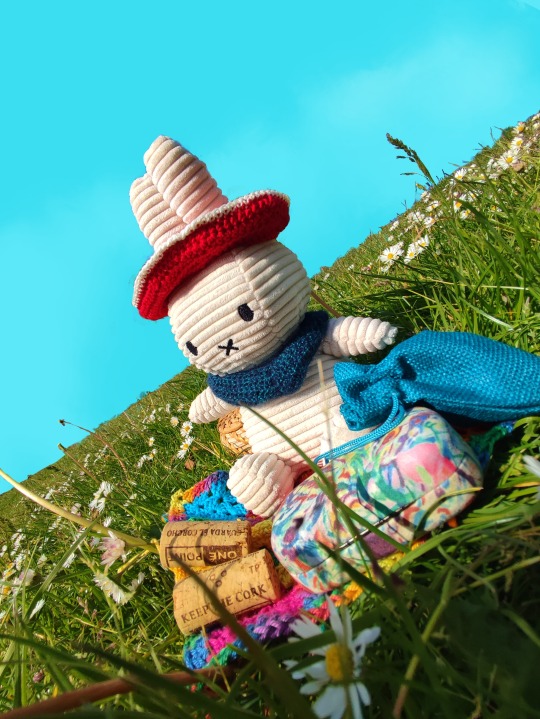

if you want to see nijntje in more outfits and situations, give me a follow! i'm currently making a cloud cardigan and some sparkly things
image description: the pictures are different angles of the same scene. in a meadow a rabbit plushie sits on a multi-coloured tiny crochet blanket. on the blanket are also 2 corks and a drawstring bag. the plushie is wearing a red beret with white dots, meant to look like a mushroom, and a dark blue poncho. end of image description.
i hope i did well on the image description, i'm not used to doing them and if anyone wants to give feedback on it i'll take it!
#miffy#nijntje#nijntje knuffel#plushie#make believe#cute#cottagecore#mushroom beret#my art#crochet#traditonal art#rabbit plushie#fiber art#fibercrafts#yarn
54 notes
·
View notes
Text
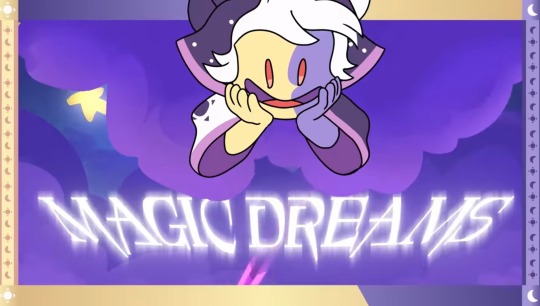





I still fucking love this
64 notes
·
View notes
Text
Made Up Make Believe Fakey Fakey Fakes

24 notes
·
View notes
Text

Creatures of Sonaria is again on the brain
#art#digital art#artist on tumblr#clip studio paint#creatures of sonaria#CoS#make believe#fanart#pancake
52 notes
·
View notes
Text
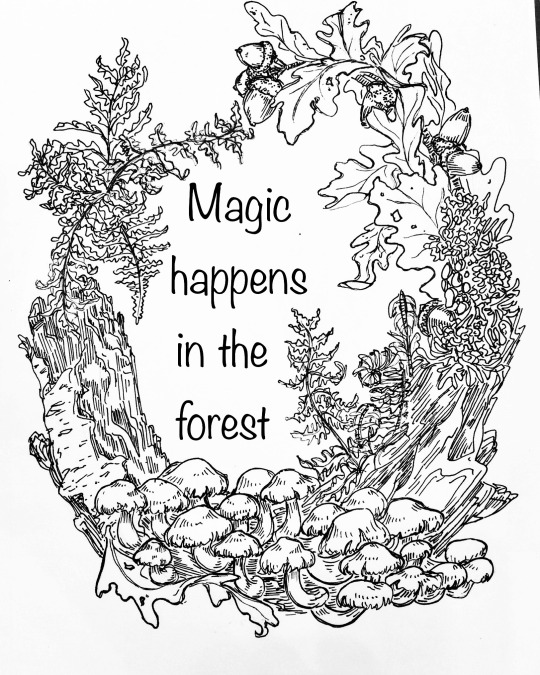
What kind of magic did you make as a kid, beneath the trees and among the moss?
🌿🍄🪨Did you cook up magic mud cakes and puddle potions for the fairies? Did you battle monsters and rescue your friends? Did you climb trees and build forts that you swore you would live in permanently?
🐾🌲What kind of treasures did you discover on your afternoons of make believe?
#illustration#artsy#art#drawing#whatpennymade#draweveryday#doodle#sketch#sketchbook#fairy#faerie#fairycore#faeriecore#fantasycore#make believe#forestcore
7 notes
·
View notes
